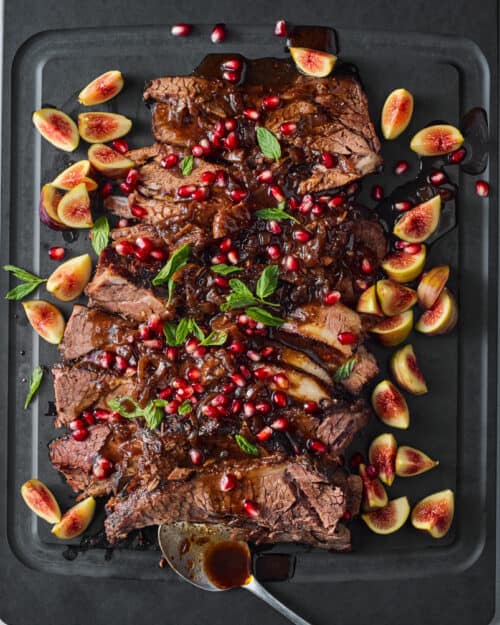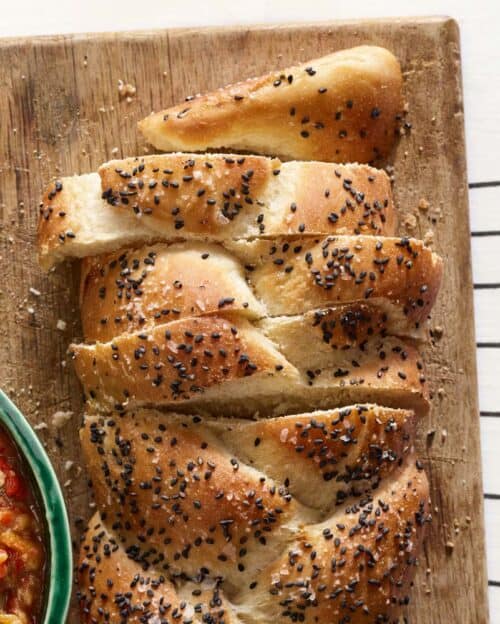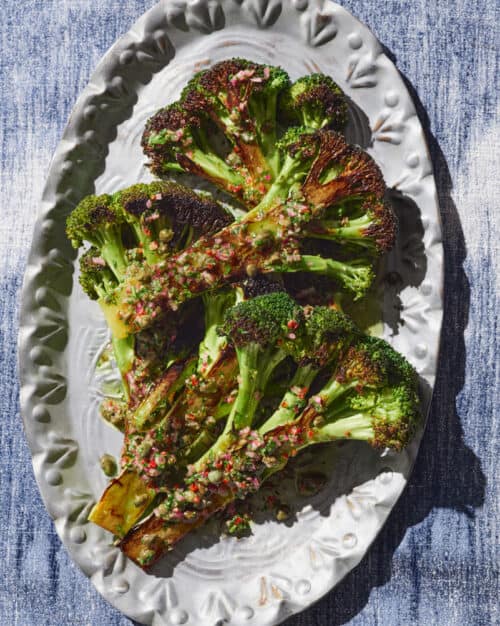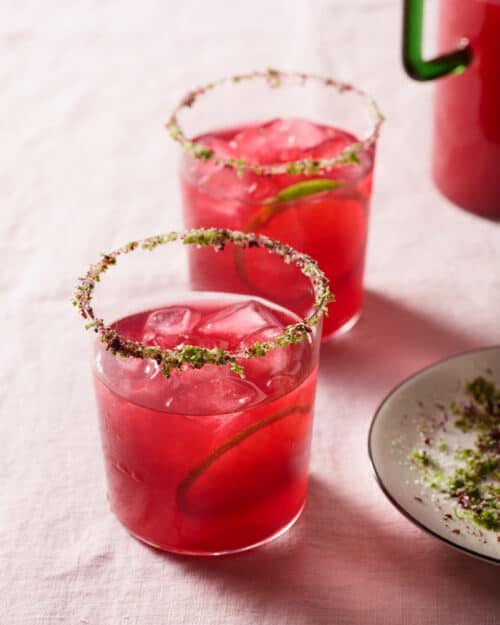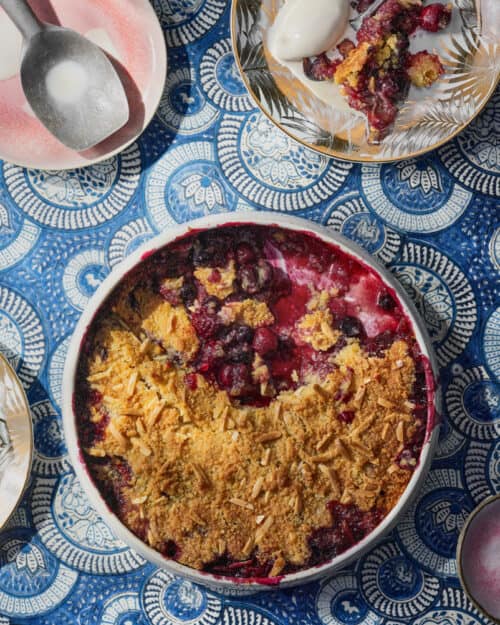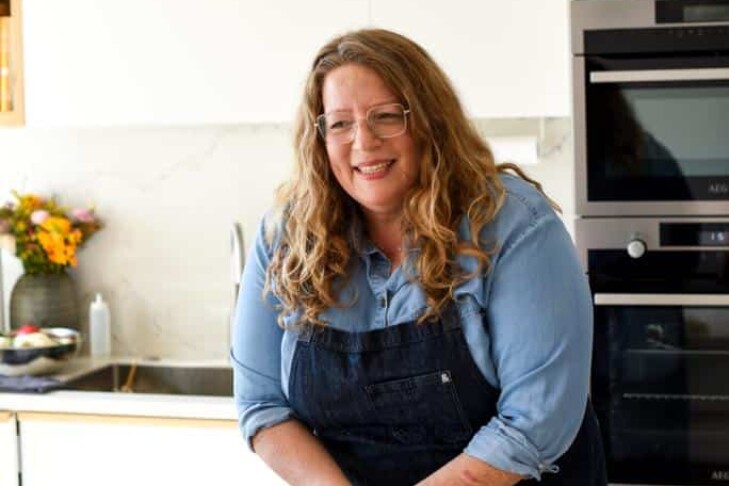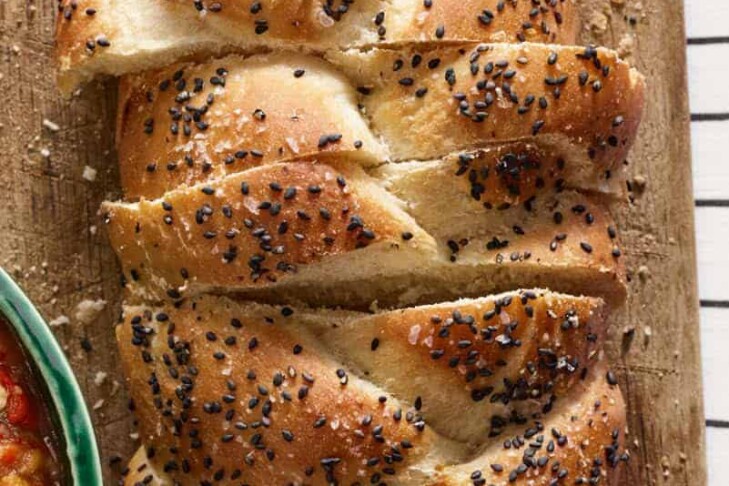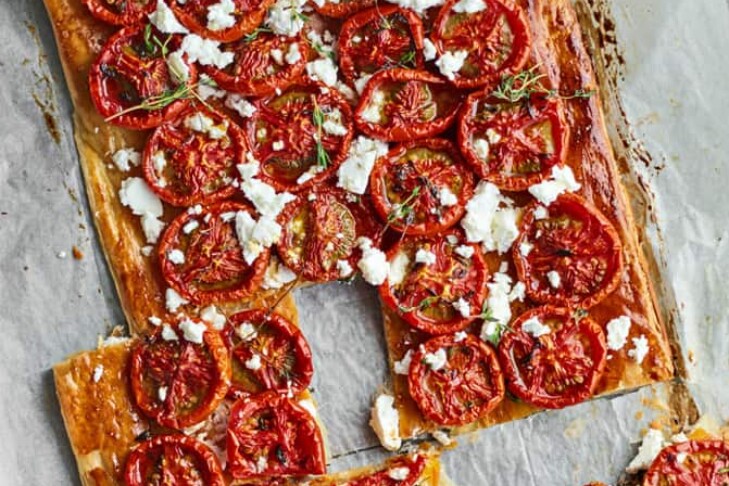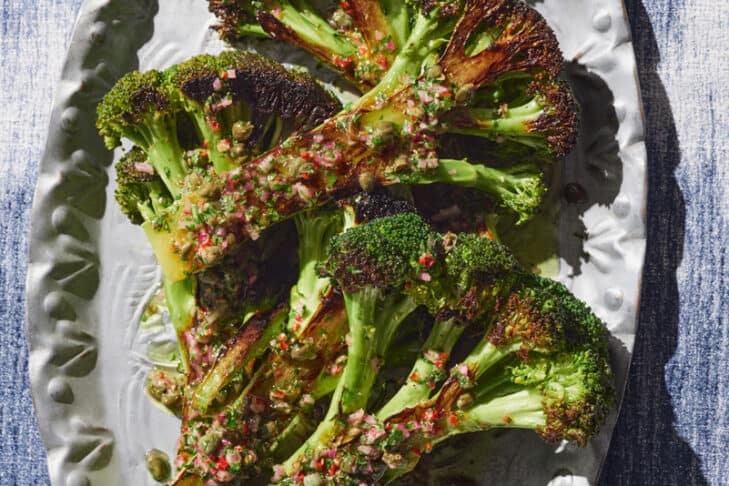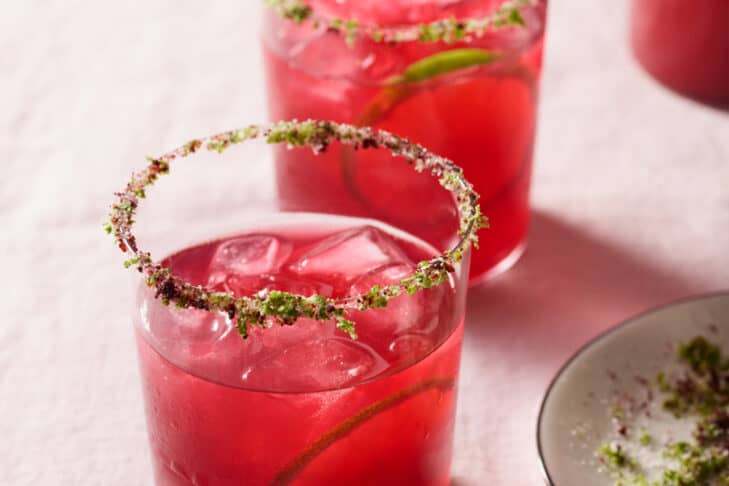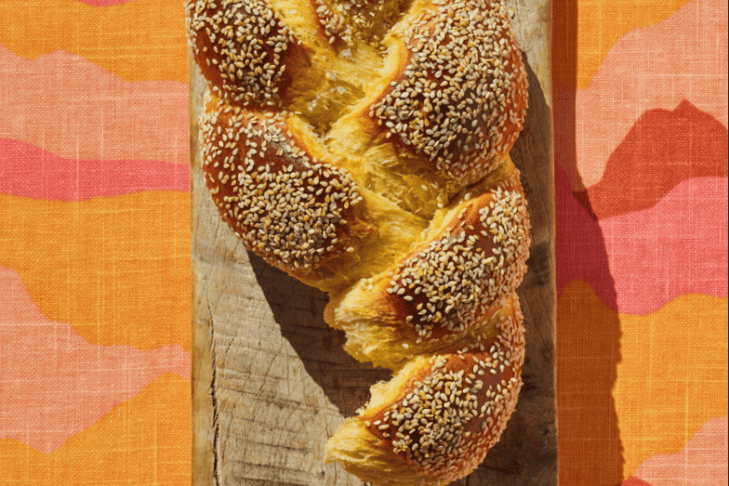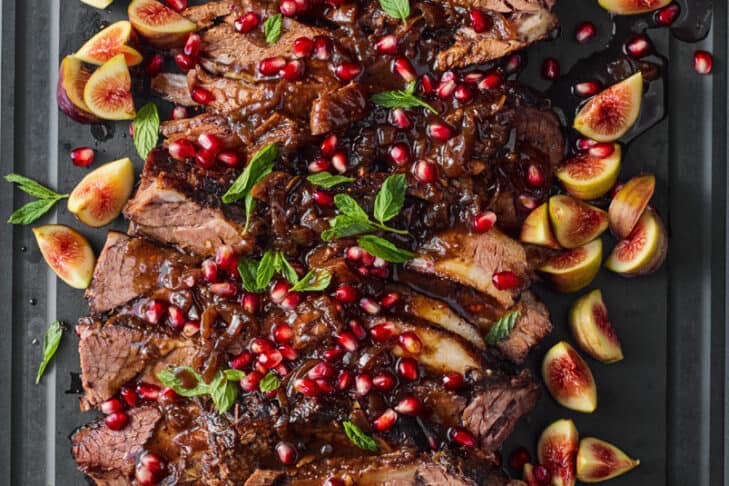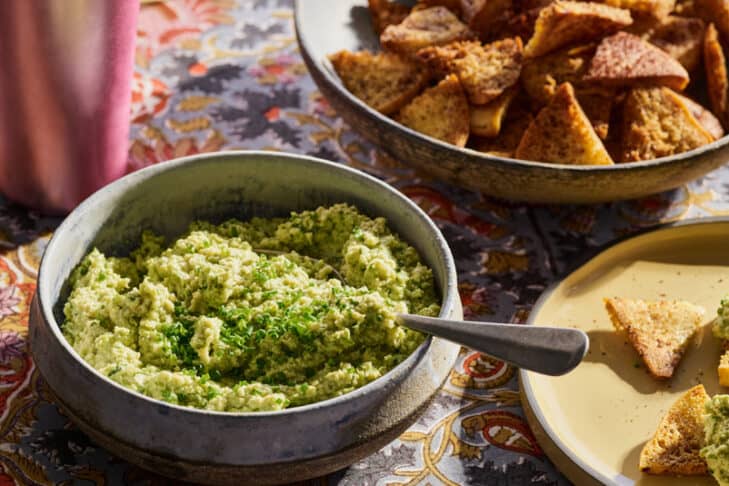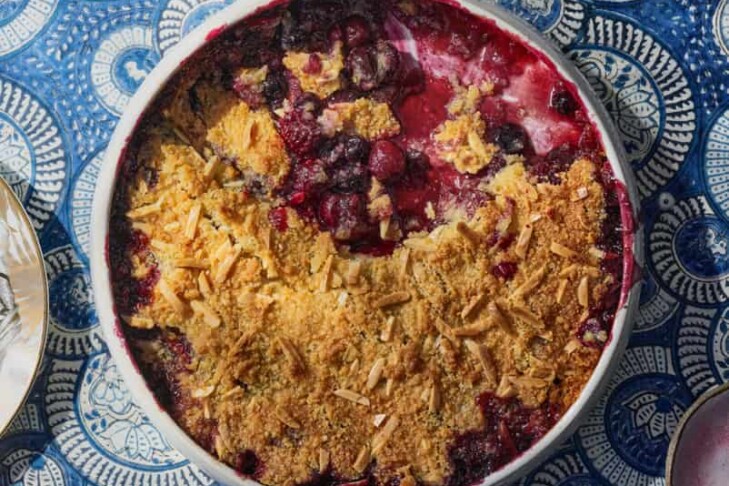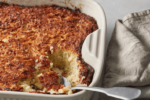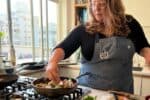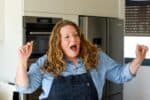Adeena Sussman is a delightfully approachable cook. She’s known for acclaimed, accessible cookbooks (“Sababa: Fresh, Sunny Flavors from My Israeli Kitchen” was a 2019 hit) and high-profile “Cravings” collaborations with Chrissy Teigen, all of which were New York Times best-sellers.
Sussman grew up in California and now lives in Tel Aviv; she brings a dual sensibility to her recipes. Her newest cookbook, “Shabbat: Recipes and Rituals From My Table to Yours,” is packed with refreshingly simple, relaxing recipes—salads, stews, spreads, even a sumac margarita—designed to honor downtime, not produce stress. (Check out her “extra crispy” potato kugel recipe!)
She’ll appear at Newton’s Temple Emanuel on Oct. 15, in conversation with Yankee magazine food editor Amy Traverso and for a cooking demo. In the meantime, I caught up with her over the phone from Israel to talk about her new book.
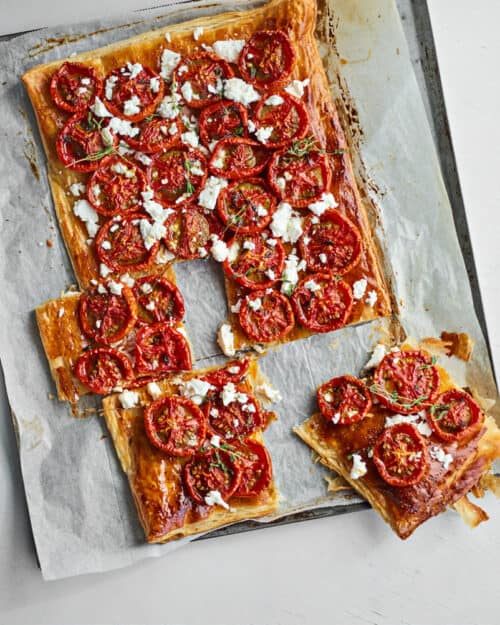
What I love about this cookbook is there’s no aspirational stress and hecticness. It’s about gathering and connecting over food in a way that’s designed to be connective and intimate, not extra work. What do you hope that readers take away from it? I was trying to convey that you can meet Shabbat where you’re at. The underlying goal, I think, is that Shabbat is something that everyone can enjoy and benefit from. Having moved to Israel, I realized that Shabbat was as much a cultural and social construct as a religious one, more than I ever had in the United States, even though I know people have many different ways of observing Shabbat everywhere. In Israel, somehow, it really is the organizing principle of the weekend for 80% of the population of the country. That definitely seeps through. What I marveled about after having moved here [in 2018] was just how varied Shabbat preparation gatherings and experiences were and how, for me, personally, I was able to approach it in a new way and fashion it in a way that worked for me in my life. And I wanted everyone else to be able to do the same thing. That’s why I wrote the book—also just to unbutton the cooking a little bit and make it more relaxed. I even write a little bit about cooking as a form of meditation and relaxation. There’s a little essay about that. That was something interesting to me, as someone who grew up not cooking on Shabbat, thinking about what it meant that I do now cook on Shabbat and how that is actually part of my Shabbat practice when I do decide to cook on Shabbat itself. Sometimes it’s the most relaxing thing that I can do, as long as it’s on my terms. Sometimes, cooking feels very overwhelming. How do you take the pressure off a little bit? How did you get to that place? First of all, an approach I’ve adopted over the years is however much time I give myself to cook is how much time it’s going to take to make the meal. If I decide that I want to spend my Friday doing something else, and I’m going to cook between 4 and 7, then the whole meal is going to be made from 4 to 7, and I design my menu and my preparation and everything to allow that to happen. Maybe I’m just going to make a chicken and a salad. That, to me, is as fulfilling and happy-making as doing a giant dinner party with nine dishes on the table. It’s really allowing the food to lead the kind of weekend you want to have. This can ultimately inform the way you cook. I’m a professional cook. So I’m fast. I know how to get things done quickly. But I do think that if you make a large-format protein or a central plate for the table, then that’s really enough. Maybe a beautiful green salad, and maybe some kind of a vegetable side dish; that’s a meal. Or make a platter of chicken, and then just accessorize it with a couple of things; that’s fine, too. My recipes are fairly straightforward. Other than the stews, generally they’re not 30 ingredients; they’re not made with a lot of things you can’t find in the store. They have pretty basic cooking techniques. How did you decide what recipes to include? It’s a beautiful cookbook. The recipes were put to bed a long time ago. And I’ve made so many things since that I keep joking to my husband: “Should have put it in the book!” I have co-authored a lot of books, and the person who was most influential for me was Chrissy Teigen, because she is a vast consumer of cookbooks and really believes that the best cookbooks are the most straightforward, organizationally. They go by course; if you want to make a salad, you go into the salad section. You know, I think books that are organized by season or mood or occasion are lovely, but they’re less books that you’re going to cook from every day, because I think a lot of our cooking is most informed by need. At the end of the day, I want you to make this food. So I organized the book by course and type of dish. Then I started with low-hanging fruit, things I definitely wanted to put in, like Shabbat classics, kugels and long-cooked stews. But I also let my experience living in Israel inform the process, because I went on a journey of cooking with different people and having them teach me their dishes. I had enough time that I could allow my experiences to inform the table of contents, as opposed to just creating this ironclad array of recipes. I also worked on the book a lot during COVID, and the earlier part was more me cooking from my farm boxes. When the country opened up more, I went out into people’s homes and cooked with them and learned different challahs and stews. And I live in the market—and I’m an impulsive cook. I often cook based upon what I find and what’s in season. My recipes are simple but not dumb. That’s always my goal: to have complexity of flavor, layers of flavor. But they feel doable. What sets your approach apart from others? I mean, there’s a lot of cookbooks out there. People tell me that my recipes are very conversational. I like to speak directly to my cooks when I’m writing a recipe. There will be a lot of things in parentheses — “don’t worry if this happens” or “it should look like this.” I think that’s distinctive to my style. My recipes are technical, but they’re also conversational. They’re trying to be anticipatory of people’s needs in the kitchen and offer reassurance and support. I like people’s food at home to look like it looks in my books. We work really hard to make the food look beautiful. It’s all real food. There are no chemicals, artificial shellacs or anything crazy like that. No pins holding down things. I like people to be able to make the food and then look at the pictures and feel that it looks the same. That, to me, is a mark of comfort to a home cook. And I think the combination of being an expat American living in a foreign country also has a lot of meanings to me personally. I spoke recently at a forum for new immigrants to Israel. And what I said to them was: People might try to tell you to lose your Americanism; try to be as Israeli as possible. But I think the best way to approach living here and being happy is to embrace your home culture, and bring what you can from it to this country while trying to integrate it. What you bring to the table is important to the mix here. In my cookbook, there are recipes that definitely speak to my heritage and the way I was raised. One of the recipes has ketchup in it. I’m not a food snob. I’ve got to ask: How can we make our food look better on Instagram? Don’t try too hard with the food. Put it on the plate. Don’t arrange your parsley leaves in some kind of designed pattern. Everything needs to look very natural and very unbuttoned and also just really fresh. I personally almost only photograph my food in natural light. Natural light is the best accessory, the best ingredient for food. Things look so warm, natural and approachable. My food is very real. My cookbooks are styled, but my Instagram is: just cook it and lay it out on the plate.
Related
